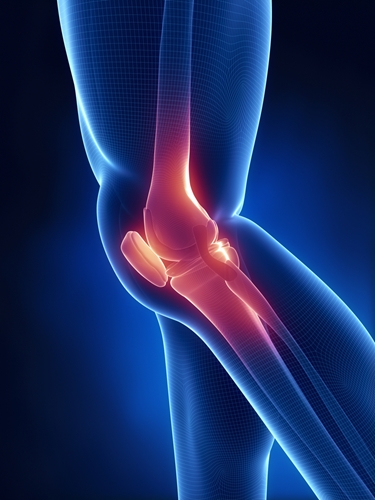2 ACL reconstruction studies examine reinjury
Anterior cruciate ligament injuries occur more than 200,000 times per year, and roughly 100,000 of those injuries result in knee reconstruction surgery, according to the University of California, San Francisco Department of Orthopaedic Surgery. About 70 percent of ACL accidents happen while playing sports that require agility, such as basketball, soccer, skiing and football. Of those injuries, only about 30 percent are a result of direct contact. Additionally, ACL tears occur most often in patients between 15 and 45 years of age, due to frequent participation in athletic activities. Two studies recently presented by researchers at the Annual Meeting of the American Orthopaedic Society of Sports Medicine examined ACL injuries.
Analysis of ACL reinjury
One of the studies, conducted by Christopher Kaeding, M.D., and a team of researchers at Ohio State University, found that age, activity level and the type of graft utilized may lead to reinjury through the analysis of 2,695 patients' medical data in the MOON ACL injury database between 2002 and 2008. The researchers accounted for graft type, Mark score, sport played post-surgery, sex, smoking status, meniscal tear status and body mass index. Additionally, all of the patients in the study had a primary ACL reconstruction surgery with no history of contralateral knee injury.
The study found that 4.3 percent of patients had a graft retear on the same side of their body, while 3.6 percent had a retear on the opposite side. For each year of increased age, the odds of retearing the same ACL decreased by 9 percent. Conversely, the risk of tearing the opposite ACL reduced by 4 percent for every gained year of age.
"The study highlights that younger age, higher activity levels at time of injury and what type of graft used may increase risk of same side ACL injury within two years," said Kaeding. "With individuals having higher activity levels and lower age, retears on the opposite leg were more prominent. Physicians and physical therapists need to better educate our patients about continued neuromuscular training even after the immediate rehabilitation process has ended to help prevent future tears."
Allograft vs. autograft
The other study that was presented at the annual AOSSM meeting found that the type of material used to create a new ligament affected reinjury. For 10 years, Craig Bottoni, M.D., lead author of the study, and a group of researchers from the Tripler Army Medical Center analyzed 99 orthopedic surgery patients who had used either an autograft or allograft for their ACL reconstruction. Allografts were taken from a single tissue bank, aseptically processed and fresh frozen without terminal radiation. All patients went through the same postoperative rehabilitation process, and graft fixation was identical in all knees. Almost all of the patients were in the active duty military and 87 of them were male. The median age of the participants was 26 years.
"By better understanding why and how grafts fail in ACL reconstructions, we can increase the life span of these procedures and minimize future surgeries where feasible," said Bottoni.
The study found that allografts failed more frequently than autografts in a young athletic population. More than 80 percent of all grafts were intact and stable, but patients with an allograft failed at a rate of more than three times higher than those whose knees were reconstructed with an autograft. Over the course of the 10 years, there were four autografts and 13 allograft failures, which represented 8.3 percent and 26.5 percent, respectively. Bottoni stated that because the study was only conducted on one type of allograft, tibialis posterior, the researchers cannot extrapolate the findings to cover all types of allografts.



